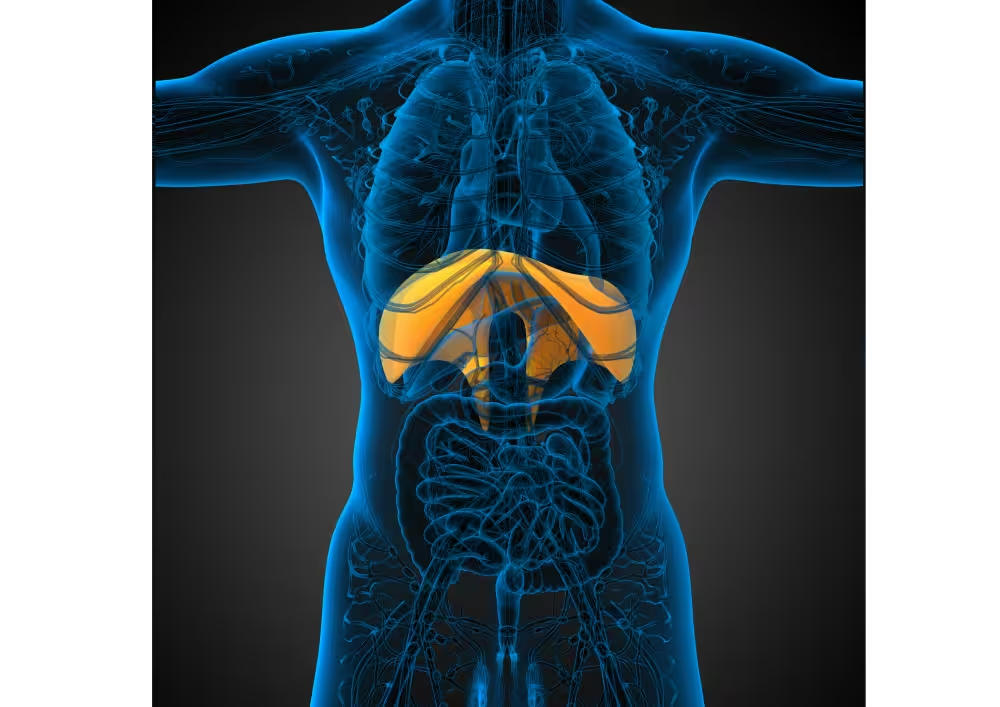How To Get Rid of a Side Stitch
What is a Side Stitch?
If you're a runner, chances are you've experienced a side stitch at some point or even regularly. If not, you are one of the lucky ones!
A side stitch, also known as exercise-related transient abdominal pain (ETAP) or simply a "stitch," is a common discomfort experienced by many runners and athletes, especially during vigorous physical activities like running.
It's characterized by a sharp, stabbing pain usually felt on one side of the abdomen, just below the ribcage. The discomfort can vary from mildly bothersome to a sharper, more intense stabbing pain.
While side stitches can be uncomfortable, they are generally harmless and can often be managed or prevented.

What causes a side stitch?
Side stitches are a complex phenomenon influenced by various factors. The exact cause of side stitches isn't fully understood, but there are several theories:
Shallow Breathing: Breathing rapidly and shallowly, especially during intense exercise, can increase the risk of side stitches. Focusing on deep and rhythmic breathing can help prevent this.
Uneven Breathing: If you're always exhaling when the same foot strikes the ground, the repetitive impact on the same side can contribute to irritation. Try switching your breathing pattern if you notice this happening.
These breathing patterns can cause irritation or spasm of the diaphragm. The diaphragm muscle is located right under the lungs and is responsible for breathing.
Blood Flow: Another theory suggests that reduced blood flow to the diaphragm or nearby abdominal muscles during exercise might contribute to the pain.
Strenuous Movements: Rapid changes in pace, abrupt movements, or sudden changes in running form can potentially trigger side stitches.
Muscle Fatigue: Pushing your body beyond its current fitness level without proper training and conditioning can lead to muscle fatigue, which might contribute to side stitches.
Excessive back flexion: or rounding of the back, can potentially contribute to the development of side stitches. When the back is rounded, it can compress the diaphragm and restrict its movement, which can affect breathing patterns and lead to discomfort or cramping. Ensuring an upright posture and activating your core muscles can be beneficial.
Digestion: Eating too much or consuming certain foods shortly before exercise could potentially contribute to side stitches due to increased pressure on the diaphragm and abdominal organs.
Dehydration: Inadequate hydration can affect muscle function and increase the risk of muscle cramps and discomfort, potentially including side stitches.
Some runners also experience pain in the shoulder (usually right-hand side) when running. This is thought to be referred pain from the diaphragm via the phrenic nerve.
While ETAP is not dangerous, it likely causes frequent breaks to stretch, reduced pace, or even cessation of a run.

Can I prevent a side stitch?
Some people seem more susceptible than others to side stitches. While side stitches can't always be completely prevented, there are several strategies that might help reduce the likelihood of experiencing them:
Proper Breathing: Focus on rhythmic and deep breathing. Try to exhale when the foot on the opposite side of the stitch strikes the ground. This can help minimize pressure on the diaphragm.
Warm-Up: Gradually warm up your body before engaging in intense exercise. This can help prepare your muscles and diaphragm for the physical demands.
Strengthen inner-core musculature (deep core muscles): Strengthening the inner-core musculature, can potentially help prevent side stitches by providing better support to the organs and structures in the abdominal area, including the diaphragm. Here's how strengthening these muscles might be beneficial:
Improved Stability: Deep core muscles, such as the transverse abdominis and pelvic floor muscles, play a crucial role in stabilizing the trunk and pelvis. When these muscles are strong, they provide better support to your organs and help maintain proper alignment during movement.
Reduced Diaphragm Irritation: Strengthening the deep core muscles can potentially reduce excessive movement and pressure on the diaphragm while running. This might help minimize irritation and discomfort that can contribute to side stitches.
Optimal Breathing: Strong core muscles can help maintain an open posture and allow for more efficient breathing. This can prevent shallow breathing patterns that might increase the risk of side stitches.
Enhanced Running Mechanics: A stable core can contribute to better overall running mechanics. When your core is strong, you're more likely to maintain proper form and posture, reducing the chances of movements that could lead to discomfort.
Hydration and Nutrition: Avoid eating a large meal immediately before exercise. If you do eat, opt for easily digestible foods. Staying hydrated but not overhydrated is also important.
Posture: Pay attention to your running posture. Slouching can potentially contribute to side stitches. Maintain an upright posture and engage your core muscles.
Progress Gradually: If you're new to running or increasing your exercise intensity, do so gradually. Sudden increases in intensity can increase the likelihood of side stitches.
Experiment with Timing: Some people find that allowing a couple of hours between eating and exercise helps prevent side stitches. Experiment with different timing to see what works for you.
How to get rid of the side stitch once it's there
If you do experience a side stitch during exercise, here are some steps you can take:
Slow Down: Gradually reduce your pace or intensity to allow your body to adjust.
Press or Massage: Gently press on or massage the area to help alleviate the discomfort.
Deep Breaths: Focus on slow and deep breathing to help relax the diaphragm.
Change Breathing Pattern: If the stitch is on one side, try switching your breathing pattern to exhale when the opposite foot strikes the ground.
Stretch:Stretching can potentially provide relief from side stitches by helping to relax the diaphragm and surrounding muscles, which might become tense during intense physical activity.
stop running:If a side stitch becomes severe or persists despite attempts to alleviate it, it's advisable to stop running temporarily. Continuing to run with severe discomfort could potentially lead to injury or exacerbate the issue, so taking a break allows your body to recover and prevents any further complications.
If you consistently experience severe or persistent side stitches, it's a good idea to seek advice from a healthcare professional or a sports medicine specialist to rule out any underlying issues and receive personalized advice.